Opinion & Analysis
Fantasy Cheat Sheet: Deutsche Bank Championship
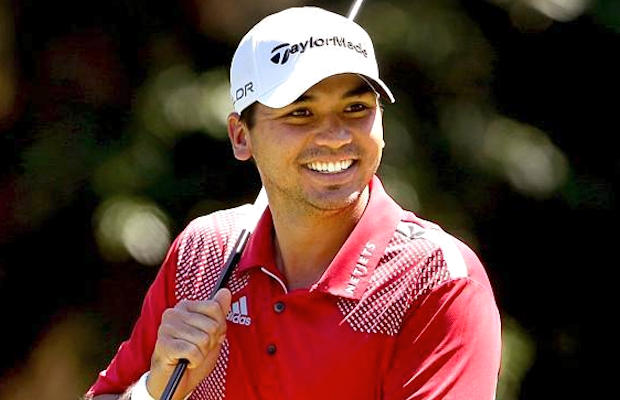
It’s easy to just sit back and watch a weekly tournament and not be aware of the many things churning below the surface that really make this time of year interesting.
The FedEx Cup playoffs head to Boston this week and in the process are leaving 25 players behind from the ruin’s of The Barclays, where Hunter Mahan grabbed 2,500 FedEx Cup points with his win and vaulted to the top of the standings.
First, we’ve got a Friday start and a Labor Day finish to this week’s Deutsche Bank Championship at TPC Boston, where Henrik Stenson is the defending champion. Among the storylines, 30 players will not advance to the top-70 event at the BMW Championship at Cherry Hills in Colorado.
Second, while the FedEx Cup playoffs is going on, those who didn’t break into the top 125 are competing in the concurrently running Web.com Tour Finals to keep their PGA Tour cards. As a side note, Carlos Ortiz won the Web.com Tour’s final event this past weekend and in so doing won his third tournament of the year, becoming the first to gain PGA Tour exemption for next year via a three-win escalator. Not bad.
Third, there are still Ryder Cup slots yet to be determined and the last week to impress U.S. captain Tom Watson. So if you’re looking for storylines, the Deutsche Bank will have them in abundance.
Let’s break down some of the fantasy angles now in this week’s edition of Risk, Reward, Ruin.
RISK
TPC Boston only plays to a length of 7,214 yards. That’s not long, but it’s not short either. A par-71 course, after renovations in 2006 it became a venue where scoring was the name of the game, which happens to keep the patrons interested. Normally, hitting greens in regulation gives you an advantage for birdies, but it has been scrambling and birdie average have proven to be just as important statistics to watch. Additionally, you want a hot golfer at this point of the year. Here’s a few that could surprise or underwhelm this week.
Hunter Mahan
We’re told that Mahan’s victory at The Barclays isn’t a fluke, that he’s been building to that result for a while. His short game excelled in New Jersey and no win on Tour is a fluke. Following a T15 at Firestone and a T7 at the PGA Championship, he still wasn’t on many people’s radar. But in order to trust him the rest of the way through the playoffs, it’d be nice to see him play strong right out of the gate. Mahan is 8 for 11 in his career at the Deutsche Bank with all of his missed cuts occurring early in his career, but he still has just one top-10, a T8 three years ago, plus a T13 last year.
Zach Johnson
I’ve got one start left from ZJ and I’m considering burning it here, but I probably should hold off for another week. The problem is when Johnson gets hot, he gets really hot. His year slowed down considerably after a hot start and really hasn’t been heard from much aside from his standard low tournament at the John Deere Classic. But a T22 and two rounds in the 60s was a good sign and one that may suggest putting him on a Yahoo B bench and seeing what happens. It’s doubtful many others will have him, which could create a nice edge if he does start to go low. Has yet to crack the top 10 in Boston, but also is a risk to miss the cut.
Brandt Snedeker
Do we judge Snedeker by the missed cut at The Barclays or the four previous tournaments where he was trending upward in a big way? I think it was more of the latter, being undone by a bad second round in New Jersey. The good news is TPC Boston is a comfortable course for him since he finished in the top six in three consecutive years from 2010-12, including a T3 in 2011. Snedeker seems to play his best this time of year and he has one more chance to impress Tom Watson and make the Ryder Cup team.
Jordan Spieth
Spieth’s Ryder Cup position is locked up, but it’d be nice if he were playing at the level he’s capable of. He looked better at The Barclays, finishing T22 and posting a final-round 67 that hopefully carries through to this week. Spieth this week to me is like Jason Day last week, a huge upside hidden by rust or bad results. He’ll be in my lineup for sure, and a T4 in his debut last year (67-66-72-62) gives credence to the idea a birdie course will liven up the demands of the end of the PGA Tour season.
Patrick Reed
You can make a case for Reed slipping into one of the reward slots below, but I have a hard time justifying him over some of the bigger names. Still, the kid is a winner and has the aggressive mentality that serves itself well on a course like this. He finished T70 in his debut last year, shooting 68-72-73-69, and that’s a little discouraging, but he could also be getting hot right now. Following a T24 at the Wyndham, only weeks removed from a T4 at Firestone, Reed posted a T9 at The Barclays. It could have been more consistent, having shot 71-66-73-65, but he could be a very nice Yahoo A pick alongside one of the big and consistent names like Adam Scott or Matt Kuchar.
REWARD
When wagering on players vs. a birdie course, understand how difficult it is to score on a championship course layout. One of the reason’s the top pros score better than others down the rankings is they know just how to execute the best shot for that moment that either maximizes the potential for scoring or mitigates the chance of danger. To use the Web.com Tour as an example, and I don’t remember the player, but he tried to hit a 3-wood into a tight green only 215 yards away. A hybrid would have had the right distance, an iron could have picked the ball cleanly and left him safely on, but instead he tried to get too cute and dumped it in the woods.
Bogey or worse. There are players in the field who do just that and can’t quite execute every shot. The players below can.
Rory McIlroy
Even when McIlroy is off, like he was last week, he still can and will finish in the top 25. If you burned a start, no big deal. It was the smart move to use him. The same can be said for this week where he was the 2012 champion. There’s nothing scary about TPC Boston and McIlroy’s run of 1-1-1-22 is a great lead up. Tough courses can take a lot out of you with the mental focus required. Expect this week to be the jump-start McIlroy needs to get right to the top of the FedEx Cup standings.
Jason Day
This is exciting. I pointed out last week that Day has just the kind of huge risky upside you’d like to get hot. Well, he did. And with no health concerns, Day vaults into a reward pick this week. He should score well in Boston, where he has two top-three finishes and hasn’t missed the cut in six tries.
Matt Kuchar
The question mark last week for Kuchar was a sore back. But after a T5 at The Barclays, his doubt has been removed too. He’s backnailing top-10s, securing his 11th of the season to lead the PGA Tour. Kuchar was five strokes off the pace last year, finishing T4 after rounds of 66-66-69-66.
Rickie Fowler
No reason to hold back on Fowler again since he’s blistering hot since turning a T13 in Memphis in June. He’s now reeled off consecutive finishes of T2, T2, T8, T3 and T9. His Barclays result was undone just a tad by a 73 in round two, but overall 14 of his last 16 rounds have been in the 60s. It’s a birdie course and Fowler should have four more rounds in the 60s this week.
Jim Furyk
He just keeps rolling along even when it seems discouragement in not winning should be kicking his butt. That speaks a lot to Furyk’s maturity and how an even approach can help on the golf course. Furyk has now amassed nine top-10s this season after a T8 at The Barclays. Arguably, he’s building for a win. He owns three solo second results this year and three of his last five tournaments have resulted in t5 or better. Oh and he hasn’t missed a cut in nine tries in Boston, accruing three top-10s.
RUIN
At this stage of the game, it becomes clearer to see who is struggling and who is not. It’s easier to tell who belongs and who does not. And for fantasy owners, there’s very little need to get cute and start picking bottom feeders to fill out a lineup. Hopefully you’ve managed starts and if you are using tier A, you’re using tier B and staying far away from the rest of the alphabet, which would be the golfers below.
Tim Clark
After an opening-round round 76 and a withdrawal at The Barclays, Clark’s winning of the RBC Canadian Open is standing out as an aberration. He struggled his next six rounds of golf, performed decently at the Wyndham and then New Jersey happened. Now he heads to a TPC Boston course where he’s missed the cut the last two years, which is an ominous accomplishment given the tight field.
Ryan Palmer
Also in the missed-the-last-two-cuts department is Palmer, which is an automatic qualifier for ruin status. While his T5 at the PGA Championship was a boon for his earnings this year, the T74 at the Barclays— in which he missed a secondary cut— is making the PGA result look like an outlier he only happens into once every few months.
Cameron Tringale
It’s rare to put a kid coming off a career-best tournament in an avoid situation, but Tringale provides little in the way of enduring confidence even after his T2 at The Barclays. Granted, he is a bit of a scorer, which is nice on this course, so he could post a couple good rounds. But this is still the same course as last year, when he shot 73-67-71-70 and finished T67. It’s the same course as 2012, when he missed the cut with rounds of 73-79. It’s the same as ’11, when he MC’d (68-76). Tringale’s issue is consistency and one tournament doesn’t prove anything.
K.J. Choi
If not for two T2’s this season, I’m not sure Choi even gets in the playoffs. Since his second at the Travelers, he’s posted a T64, MC, MC, T66, MC and a T71 last week. Ouch. On top of that, his Boston results have been T41, MC, MC, T45 the last four years. Double ouch.
Ben Crane
If you’re playing bad golf, I feel bad for you, son. I got T99 problems but made cuts ain’t one. That could be a new Golf Boys song line, but unlike Bubba Watson, Rickie Fowler and Hunter Mahan, it’s Crane that can’t seem to keep the foot on the gas. Since his win in Memphis, he’s posted 74th, T37, T34, WD, WD, and a missed cut last week that placed him at T99. I’m not sure what the issues are for him at this point, but at 78th in the FedEx Cup standings, he’s looking like a chop for the top 70 cut line.
Thanks for reading. If you’d like to further discuss strategies or selections, you can comment below or find me on Twitter @bricmiller.
Best of luck!
This week’s picks:
Yahoo!
Group A: M. Kuchar (S), B. Snedeker
Group B: J. Spieth (S), J. Day (S), K. Bradley, H. Mahan
Group C: B. Todd (S), C. Hoffman
(Last week: 150 points; Summer segment: 1,483; Summer rank: 27,361; Season points: 5,249; Full Season rank: 3,995 – 95th percentile)
PGATour.com
M. Kuchar, R. McIlroy, A. Scott, J. Day
(Last week: 462 points; Season: 9,305; Rank: 4,146)
Golf Channel
Group 1: R. McIlroy
Group 2: J. Spieth
Group 3: B. Todd
Group 4: J. Overton
(Last week: $737,733; Season: $15,773,655; Mulligan: $26,980; Rank: 12,544 of 41,465)
Opinion & Analysis
The 2 primary challenges golf equipment companies face

As the editor-in-chief of this website and an observer of the GolfWRX forums and other online golf equipment discourse for over a decade, I’m pretty well attuned to the grunts and grumbles of a significant portion of the golf equipment purchasing spectrum. And before you accuse me of lording above all in some digital ivory tower, I’d like to offer that I worked at golf courses (public and private) for years prior to picking up my pen, so I’m well-versed in the non-degenerate golf equipment consumers out there. I touched (green)grass (retail)!
Complaints about the ills of and related to the OEMs usually follow some version of: Product cycles are too short for real innovation, tour equipment isn’t the same as retail (which is largely not true, by the way), too much is invested in marketing and not enough in R&D, top staffer X hasn’t even put the new driver in play, so it’s obviously not superior to the previous generation, prices are too high, and on and on.
Without digging into the merits of any of these claims, which I believe are mostly red herrings, I’d like to bring into view of our rangefinder what I believe to be the two primary difficulties golf equipment companies face.
One: As Terry Koehler, back when he was the CEO of Ben Hogan, told me at the time of the Ft Worth irons launch, if you can’t regularly hit the golf ball in a coin-sized area in the middle of the face, there’s not a ton that iron technology can do for you. Now, this is less true now with respect to irons than when he said it, and is less and less true by degrees as the clubs get larger (utilities, fairways, hybrids, drivers), but there remains a great deal of golf equipment truth in that statement. Think about it — which is to say, in TL;DR fashion, get lessons from a qualified instructor who will teach you about the fundamentals of repeatable impact and how the golf swing works, not just offer band-aid fixes. If you can’t repeatably deliver the golf club to the golf ball in something resembling the manner it was designed for, how can you expect to be getting the most out of the club — put another way, the maximum value from your investment?
Similarly, game improvement equipment can only improve your game if you game it. In other words, get fit for the clubs you ought to be playing rather than filling the bag with the ones you wish you could hit or used to be able to hit. Of course, don’t do this if you don’t care about performance and just want to hit a forged blade while playing off an 18 handicap. That’s absolutely fine. There were plenty of members in clubs back in the day playing Hogan Apex or Mizuno MP-32 irons who had no business doing so from a ballstriking standpoint, but they enjoyed their look, feel, and complementary qualities to their Gatsby hats and cashmere sweaters. Do what brings you a measure of joy in this maddening game.
Now, the second issue. This is not a plea for non-conforming equipment; rather, it is a statement of fact. USGA/R&A limits on every facet of golf equipment are detrimental to golf equipment manufacturers. Sure, you know this, but do you think about it as it applies to almost every element of equipment? A 500cc driver would be inherently more forgiving than a 460cc, as one with a COR measurement in excess of 0.83. 50-inch shafts. Box grooves. And on and on.
Would fewer regulations be objectively bad for the game? Would this erode its soul? Fortunately, that’s beside the point of this exercise, which is merely to point out the facts. The fact, in this case, is that equipment restrictions and regulations are the slaughterbench of an abundance of innovation in the golf equipment space. Is this for the best? Well, now I’ve asked the question twice and might as well give a partial response, I guess my answer to that would be, “It depends on what type of golf you’re playing and who you’re playing it with.”
For my part, I don’t mind embarrassing myself with vintage blades and persimmons chasing after the quasi-spiritual elevation of a well-struck shot, but that’s just me. Plenty of folks don’t give a damn if their grooves are conforming. Plenty of folks think the folks in Liberty Corner ought to add a prison to the museum for such offences. And those are just a few of the considerations for the amateur game — which doesn’t get inside the gallery ropes of the pro game…
Different strokes in the game of golf, in my humble opinion.
Anyway, I believe equipment company engineers are genuinely trying to build better equipment year over year. The marketing departments are trying to find ways to make this equipment appeal to the broadest segment of the golf market possible. All of this against (1) the backdrop of — at least for now — firm product cycles. And golfers who, with their ~15 average handicap (men), for the most part, are not striping the golf ball like Tiger in his prime and seem to have less and less time year over year to practice and improve. (2) Regulations that massively restrict what they’re able to do…
That’s the landscape as I see it and the real headwinds for golf equipment companies. No doubt, there’s more I haven’t considered, but I think the previous is a better — and better faith — point of departure when formulating any serious commentary on the golf equipment world than some of the more cynical and conspiratorial takes I hear.
Agree? Disagree? Think I’m worthy of an Adam Hadwin-esque security guard tackle? Let me know in the comments.
@golfoncbs The infamous Adam Hadwin tackle ? #golf #fyp #canada #pgatour #adamhadwin ? Ghibli-style nostalgic waltz – MaSssuguMusic
Podcasts
Fore Love of Golf: Introducing a new club concept

Episode #16 brings us Cliff McKinney. Cliff is the founder of Old Charlie Golf Club, a new club, and concept, to be built in the Florida panhandle. The model is quite interesting and aims to make great, private golf more affordable. We hope you enjoy the show!
Opinion & Analysis
On Scottie Scheffler wondering ‘What’s the point of winning?’

Last week, I came across a reel from BBC Sport on Instagram featuring Scottie Scheffler speaking to the media ahead of The Open at Royal Portrush. In it, he shared that he often wonders what the point is of wanting to win tournaments so badly — especially when he knows, deep down, that it doesn’t lead to a truly fulfilling life.
View this post on Instagram
“Is it great to be able to win tournaments and to accomplish the things I have in the game of golf? Yeah, it brings tears to my eyes just to think about it because I’ve literally worked my entire life to be good at this sport,” Scheffler said. “To have that kind of sense of accomplishment, I think, is a pretty cool feeling. To get to live out your dreams is very special, but at the end of the day, I’m not out here to inspire the next generation of golfers. I’m not out here to inspire someone to be the best player in the world, because what’s the point?”
Ironically — or perhaps perfectly — he went on to win the claret jug.
That question — what’s the point of winning? — cuts straight to the heart of the human journey.
As someone who’s spent over two decades in the trenches of professional golf, and in deep study of the mental, emotional, and spiritual dimensions of the game, I see Scottie’s inner conflict as a sign of soul evolution in motion.
I came to golf late. I wasn’t a junior standout or college All-American. At 27, I left a steady corporate job to see if I could be on the PGA Tour starting as a 14-handicap, average-length hitter. Over the years, my journey has been defined less by trophies and more by the relentless effort to navigate the deeply inequitable and gated system of professional golf — an effort that ultimately turned inward and helped me evolve as both a golfer and a person.
One perspective that helped me make sense of this inner dissonance around competition and our culture’s tendency to overvalue winning is the idea of soul evolution.
The University of Virginia’s Division of Perceptual Studies has done extensive research on reincarnation, and Netflix’s Surviving Death (Episode 6) explores the topic, too. Whether you take it literally or metaphorically, the idea that we’re on a long arc of growth — from beginner to sage elder — offers a profound perspective.
If you accept the premise literally, then terms like “young soul” and “old soul” start to hold meaning. However, even if we set the word “soul” aside, it’s easy to see that different levels of life experience produce different worldviews.
Newer souls — or people in earlier stages of their development — may be curious and kind but still lack discernment or depth. There is a naivety, and they don’t yet question as deeply, tending to see things in black and white, partly because certainty feels safer than confronting the unknown.
As we gain more experience, we begin to experiment. We test limits. We chase extreme external goals — sometimes at the expense of health, relationships, or inner peace — still operating from hunger, ambition, and the fragility of the ego.
It’s a necessary stage, but often a turbulent and unfulfilling one.
David Duval fell off the map after reaching World No. 1. Bubba Watson had his own “Is this it?” moment with his caddie, Ted Scott, after winning the Masters.
In Aaron Rodgers: Enigma, reflecting on his 2011 Super Bowl win, Rodgers said:
“Now I’ve accomplished the only thing that I really, really wanted to do in my life. Now what? I was like, ‘Did I aim at the wrong thing? Did I spend too much time thinking about stuff that ultimately doesn’t give you true happiness?’”
Jim Carrey once said, “I think everybody should get rich and famous and do everything they ever dreamed of so they can see that it’s not the answer.”
Eventually, though, something shifts.
We begin to see in shades of gray. Winning, dominating, accumulating—these pursuits lose their shine. The rewards feel more fleeting. Living in a constant state of fight-or-flight makes us feel alive, yes, but not happy and joyful.
Compassion begins to replace ambition. Love, presence, and gratitude become more fulfilling than status, profits, or trophies. We crave balance over burnout. Collaboration over competition. Meaning over metrics.
Interestingly, if we zoom out, we can apply this same model to nations and cultures. Countries, like people, have a collective “soul stage” made up of the individuals within them.
Take the United States, for example. I’d place it as a mid-level soul: highly competitive and deeply driven, but still learning emotional maturity. Still uncomfortable with nuance. Still believing that more is always better. Despite its global wins, the U.S. currently ranks just 23rd in happiness (as of 2025). You might liken it to a gifted teenager—bold, eager, and ambitious, but angsty and still figuring out how to live well and in balance. As much as a parent wants to protect their child, sometimes the child has to make their own mistakes to truly grow.
So when Scottie Scheffler wonders what the point of winning is, I don’t see someone losing strength.
I see someone evolving.
He’s beginning to look beyond the leaderboard. Beyond metrics of success that carry a lower vibration. And yet, in a poetic twist, Scheffler did go on to win The Open. But that only reinforces the point: even at the pinnacle, the question remains. And if more of us in the golf and sports world — and in U.S. culture at large — started asking similar questions, we might discover that the more meaningful trophy isn’t about accumulating or beating others at all costs.
It’s about awakening and evolving to something more than winning could ever promise.





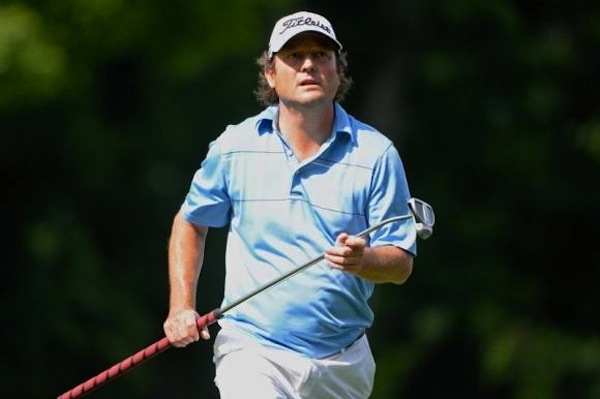







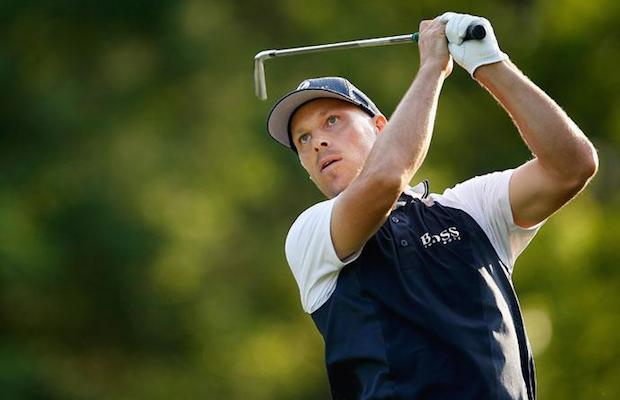

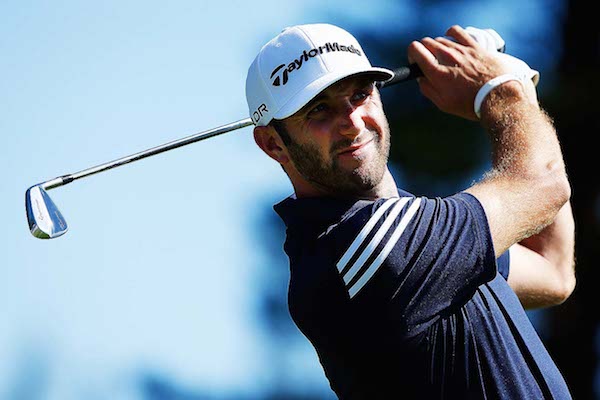
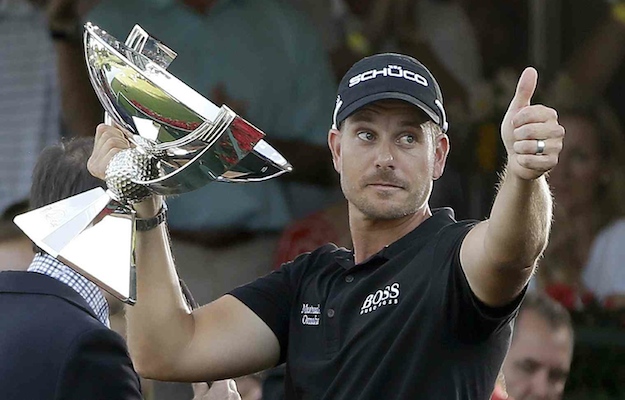








Craig Miller
Aug 28, 2014 at 8:46 am
Going with Kuchar and Scott in A
We’re the same in B
And Walker and Na Iin C
95th percentile on the year.
DB
Aug 27, 2014 at 6:23 pm
Yahoo! C Group… Brendon Todd and C. Hoffman? Why?
Brian Miller
Aug 27, 2014 at 8:32 pm
Todd’s been consistent all year long and he played two good opening rounds (65-66) at The Barclays. Yeah he faded but this won’t be a tough course for him. He’s killed it on other shoutout courses (Humana, Greenbrier). Hoffman is a scorer that went 73-69-69-69 at The Barclays. That’s nice consistency prior to this week. Schwartzel and Na are also good choices. Don’t like Walker or Palmer.
Pingback: Fantasy Cheat Sheet: Deutsche Bank Championship | Spacetimeandi.com